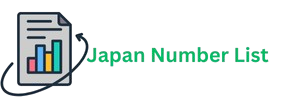In today’s fast-paced business environment, efficiency and productivity are paramount. For sales teams, traditional phone outreach can be time-consuming and labor-intensive, often leading to missed opportunities and decreased morale. Building an automated phone outreach system addresses these challenges by streamlining processes and allowing sales representatives to focus on high-value interactions. Automation not only enhances efficiency but also ensures consistency in messaging, making it a vital component for businesses looking to scale their outreach efforts effectively.
Defining Your Objectives
Before diving into the technical aspects of automation, it’s crucial to define the objectives of your phone outreach system. What do you aim to achieve? Common goals might include increasing lead generation, improving follow-up processes, or phone number lead customer engagement. Having clear objectives allows you to tailor your automation solution to meet specific needs. For instance, if your primary goal is to increase sales appointments, your system should focus on automating the scheduling process while providing representatives with the necessary tools to engage effectively with prospects. Defining these objectives will serve as a roadmap for developing your automated outreach system.
Choosing the Right Technology
Selecting the right technology is a critical step in building an automated phone outreach system. Various tools and platforms are available, each offering unique features and functionalities. Look for a solution that integrates well with your existing CRM customer experience and personalization and offers capabilities such as automated dialing, call recording, and analytics. Additionally, consider features like voice recognition and personalized messaging, which can enhance the customer experience. A robust technology stack will not only simplify the automation process but also provide valuable insights into the effectiveness of your outreach efforts.
Designing the Outreach Workflow
Once you have chosen the technology, the next step is to design an effective outreach workflow. This involves mapping out the entire process from lead acquisition to engagement. Start by defining how leads will be entered into the system—whether through direct input, integration with your CRM, or lead generation forms. Next, outline the automated steps, such as initial outreach calls, follow-ups, and reminders. Incorporate decision points that allow the system to adapt based on the prospect’s responses. For example, if a prospect expresses interest during the initial call, the system could automatically schedule a follow-up appointment. A well-designed workflow ensures a seamless experience for both the sales team and the prospects.
Implementing Personalization Strategies
Even within an automated system, personalization remains a key factor in successful outreach. While automation can streamline processes, it should not come at the expense of personal connections. Incorporate personalized messaging based on the prospect’s profile, behaviors, and previous interactions. For example, if a lead has shown whatsapp database philippines in a specific product, the automated message can highlight features relevant to them. Additionally, consider using dynamic scripts that adapt based on the prospect’s responses during calls. By blending automation with personalization, you create a more engaging experience that resonates with potential clients and increases the likelihood of conversion.
Measuring Success and Iterating
After implementing your automated phone outreach system, it’s essential to measure its success and make iterative improvements. Track key performance indicators (KPIs) such as call completion rates, conversion rates, and overall engagement levels. Analyzing this data will help identify areas for enhancement and optimize your outreach efforts. For instance, if you notice that certain messaging yields higher engagement, consider refining your scripts to incorporate those elements more broadly. Regularly soliciting feedback from your sales team can also provide insights into the system’s effectiveness and usability. By fostering a culture of continuous improvement, you can ensure that your automated outreach remains effective and aligned with your business goals.
Conclusion: The Future of Outreach
Building an automated phone outreach system is a strategic investment that can significantly enhance sales efficiency and effectiveness. By understanding the need for automation, defining clear objectives, choosing the right technology, designing a comprehensive workflow, implementing personalization strategies, and measuring success, businesses can create a robust system that drives results. As the landscape of sales continues to evolve, embracing automation will be crucial for organizations looking to stay competitive. Ultimately, an automated outreach system empowers sales teams to focus on building meaningful relationships with prospects, paving the way for sustained growth and success.
